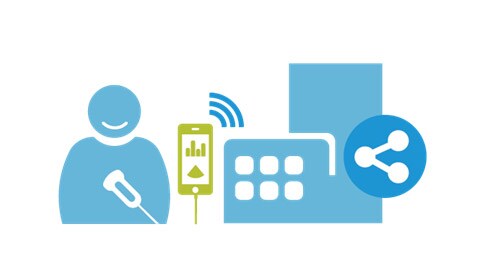POC ultrasound enhances midwife patient care
October 10, 2017
A WFUMB COE project
Handheld ultrasound is increasingly becoming an essential tool for clinicians across many clinical specialties and within a variety of care environments around the world. Besides the traditional user, point-of-care (POC) ultrasound is also appealing to new users. As expected, experienced users ask: "Can ultrasound be as effective in the hands of new users or non-physicians?" The answer became the basis for clinicians working with the Aga Khan Hospital in Nairobi, Kenya, in the study "Training Midwives to Perform Basic Obstetric Point-of-Care Ultrasound in Rural Areas Using a Tablet Platform and Mobile Phone Transmission Technology—A WFUMB COE Project."

Midwives, with no ultrasound experience, were selected to participate in the study on a volunteer basis. They received clinical and equipment training, and supervised hands-on scanning experience. All passed the final exam on their first attempt. They scanned 271 patients per study protocol, capturing specific views, completing reports and transmitting the data to radiologists at the hospital for review and confirmation of diagnoses. The study findings were impressive. Reporting accuracy of scans performed by the midwives was 99.63%.

Today, POC ultrasound provides quality imaging and is routinely used in many clinical environments, from hospital bedsides and clinics to new areas where size, readiness, ease-of-use and affordability are critical factors. The study highlights a new area where handheld ultrasound is helping clinicians deliver better health care. The midwives featured in the study used the Philips VISIQ system for their exams and reports, it’s a tablet system plus transducer. Due to VISIQ’s success, we have taken that platform to the next level with Philips Lumify, ultrasound designed around a transducer, an app and your Android device. The convenience of a transducer and your phone means POC ultrasound may be as near as your pocket. Read the full study article at Authors.elsevier.com
Related stories
-

Strengthening the doctor-patient connection
Lumify supports collaborative decision making between you and your patients. With high quality ultrasound available on your compatible smart device, you can meet patients at the point of care.
-

A Patient with Dyspnea
In this Lumify case study and summary video, Dr. Sara Nikravan discusses how she used her Philips Lumify handheld ultrasound system to guide the diagnosis and treatment of a patient experiencing shortness of breath.
-

Point-of-Care ultrasound clinical education resources
At Philips, we believe clinical education is a key part of streamlining medical management in the critical care setting.
-

BYOD: "Bring Your Own Device"
Bring your own device" means thoughtful integration of personal mobile devices to better connect clinicians and their patients
